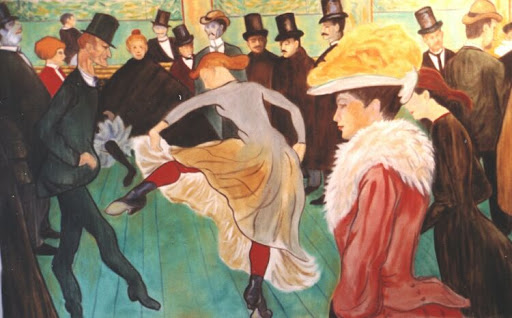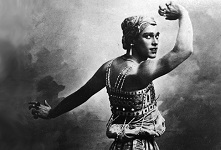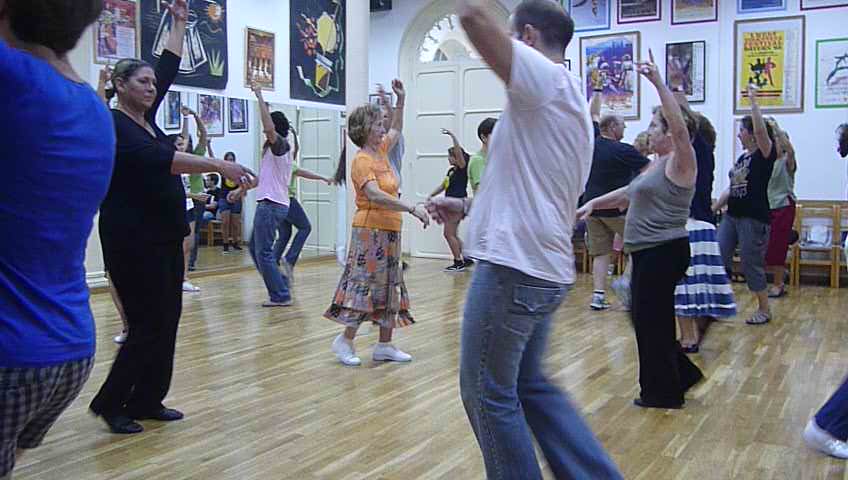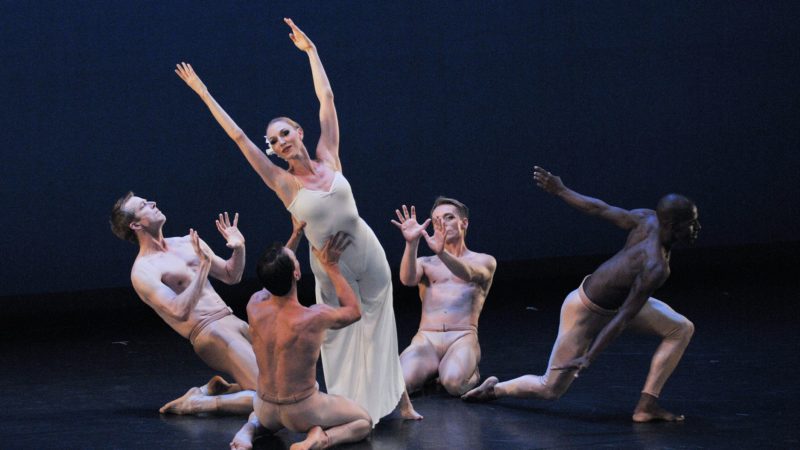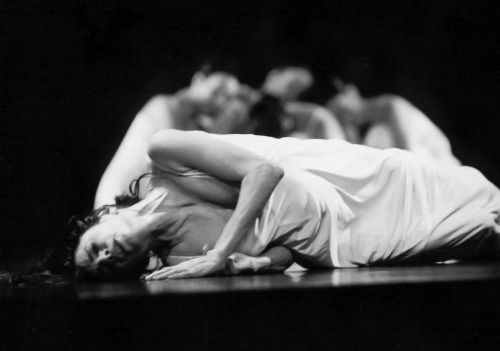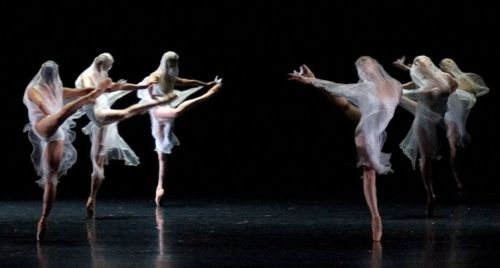The interplay between creating Hebrew culture in the British Mandate of Palestine and the dance of Yardena Cohen
Abstract
Yardena Cohen (1910-2012), an Israeli choreographer and dancer, created and performed mainly during the 1930s and 1940s in the British Mandate of Palestine. This paper investigates her unique contribution to the development of Hebrew culture within the context of shaping and formulating of nation-state and national culture for the new Jewish Yishuv (community). My aim is to explore Cohen's employment of ancient materials combined with formal frameworks inspired by German dance expressionism to rebuild new traditions that stretch back to Biblical times.
Introduction
Yardena Cohen – a dancer, choreographer and teacher – was born in Haifa in 1910 and passed away in the city in 2012, at the age of 102. Yardena is considered one of the founding mothers of Hebrew dance. She commenced developing her dance career at the beginning of the 1930s in the then British Mandate of Palestine, having returned from studying in Austria and Germany. Yardena created and performed solo dances, and in 1937 won the first prize in the National Dance Competition held in Tel Aviv. Later on she created festivities for the Kibbutzim, and taught dance. She won the prestigious Israel Award in 2010 for her lifetime achievements, saying that "She left an unforgettable mark on contemporary art and culture."
This paper investigates Yardena's unique action and contribution to the development of Hebrew culture within the context of shaping and formulating a nation-state and a national culture for the new Jewish Yishuv (a term used by the Jewish community to represent the land of Israel) in Mandatory Palestine. My aim is to explore Yardena's employment of ancient materials stretching back to Biblical times combined with formal frameworks inspired by German dance expressionism, to rebuild new artistic traditions. I will focus mainly on festivities created for the agricultural cooperative settlements during the 1940s, when her artistic activity was at its peak. In this context I will examine how far did she conform to the Yishuv's ideology and whether she found a way to express her unique voice?
Creating Hebrew Culture in Mandatory Palestine
The historian Eric Hobsbawm (1983) argues that close interaction between nationality and ethnicity is among the central causes affecting the design of nation-states and the formation of national cultures. Ethnicity serves as raw material of ancient and "primitive" communal identity, out of which a new modern national identity is being formed. During that period Hebrew culture was considered the uppermost factor in the process of consolidating the national identity of the new Jewish Yishuv by its leadership and cultural elite. Zohar Shavit (1998), an Israeli cultural researcher, claims that art in the Yishuv was perceived as a means of stimulating national sentiment and connecting the people with the idea relating to the ancient homeland.
The aspiration to build a new national society became possible thanks to Zionist ideology. That basis determined that Hebrew culture should be 'original' and 'authentic'. In the context of art these are not identical terms. 'Originality' refers to an aspect of creating a new work, distinguished from a duplicated, copied or forged piece; while 'Authenticity', is the internal substance of everything, the initial essence of existence, which with time has been covered with wrappings and to which we aspire to return (Heidegger, Being and Time, 1927). These two ends are expressed in formulating the ideological nature of Hebrew culture as generating national identity that relied on ancient Hebrew myths. Shavit (1998) further argues that the new Hebrew culture has also borrowed and assimilated 'foreign' aspects that have become part of it, such as cultural frameworks from cultural centers in Europe, despite their geographical distance.
The central position given to culture shaped to a great extent its directions of development (Segev, 1999, p. 11-12). Major culture institutions were established, such as the philharmonic orchestra or the core for radio broadcasting. The creative process of dance – ethnic, folkloric, social, and theatrical – was shaped largely by European artists who immigrated to Eretz Yisrael with the Nazis rise to power in 1933 (within theatrical dance, modern dance, rather than ballet, symbolized the urge for innovative, independent, secular, and progressive culture). They combined their training in the dominant Ausdruckstanz with inspiration from the Zionist environment. Among them were Tille Rössler, a principal teacher at Gret Palucca’s school in Dresden, the dancers Else Dublon, Paula Padani, and Katia Michaeli, who danced in Mary Wigman’s company, and Gertrud Kraus, a notable Viennese dancer and choreographer (Eshel, 2003).
Getting Started
Yardena was born to a native family of intellectuals, scientists and educators. The landscapes of the Mediterranean and Carmel mountains, oriental music, Arabic rhythms and local figures were part of her world. At the age of 14 she already created the dance Zionism (1924), while still a high school student. Upon completing her studies Yardena joined a commune on a hill in Hadera, the members of which worked during the day in orchards and building roads, and at night discussed issues such as equality, values, socialism, and the redemption of man.
In 1929 Yardena studied modern dance for two years at the State Academy for Music and Performing Arts in Vienna, under the direction of Gertrude Bodenwieser, and continued to Dresden to study with Palucca. The thriving of Ausdruckstanz was a unique opportunity for her to explore new worlds of dance, music, painting and sculpture (Howe, 2001). She writes in her book The Tambourine and the Sea: "I let new sounds and colors penetrate into my dormant worlds and evoke them. I felt the act of creation within my body "(Cohen, 1976, p. 32), and she goes on saying, "however, in the world of dance I paced being lonely and alien" (Cohen, 1976, p. 31).
In Dresden during the performance of the Indian dancer Uday Shankar Yardena heard Wigman tell Palucca: "This Palestinian; […] among us this girl is a foreigner. She has come from another world, and there she should return…" (p. 33). Yardena's feeling of estrangement increased, and upon the Nazis' rise to power she returns to Haifa, equipped with the new culture she had absorbed (Cohen, 1976, p. 33).
Dancing between East and West
The anthropologist Ted Polhemus (1993) argues that embodiment of cultural perceptions, gestures and movements absorbed by the body, is a result of living in a certain way within a certain society, expressed not only in everyday movement, but also in forms of dance of that same group. In other words, physical movement is a source for historic information, which can be identified in its cultural context.
Upon returning to Eretz Yisrael, Yardena was searching for her personal voice (she will open her studio in 1953). She created solo dances, and during the 1940sbegan producing festivities for the Kibbutzim that reflected Zionist ideology of the Jewish Yishuv. Since agriculture was the economic and ideological center during this period, nature and landscape received a representative and symbolic meaning. These ceremonies were a secular alternative to Jewish religious and traditional dance that did not suit the needs of a modern state (Manor, 1998, p. 570).
Yardena's multi-participants celebrations that interlocked with local landscapes had an affinity with amateur 'movement choirs' of Rudolf Von Laban. The ritual festivals he desired to restore had artistic and cultural motivations (the need for socialization) in the context of daily life, and were placed within a tradition of a national movement (Kew, 1999). Similarly, Yardena regarded the festivities as a means to evoke the culture of feast, emphasizing the intensity of dancing and celebrating together, and focusing the energy on ideological ardor and new life.
Easily remembered steps and patterns, which did not require prolonged training, enabled carrying out the celebrations. When Yardena commenced to create, she saw before her eyes "biblical figures with their light steps, bells on their feet, moving their hips and calling me to revive them…" – stories she heard from her father (p.73). An additional radical approach was her stepping away from Proscenium stage. Canceling the partition between viewers and dancers enabled her to carry out the festivities in open air by all community members and guests.
Kibbutz Sha'ar Ha’amakim’s 10th anniversary celebration in 1945 was based on the Biblical story of Barak Ben Avino'am who defeated the army of Sisra at the place where the Kibbutz is located. Yardena selects and sculptures the national collective memory by means of creating an affinity with stories of the past, in order to emphasize continuity of the Jewish People in the region. The celebration opened with a trumpet blast which gathered all members in the Kibbutz yard, and from there a cart full of music players led the parade of celebrators with songs and music to the large festivity space in the fields, with the mountains around and where the Kibbutz' herds of sheep and goats serve as its scenery. At the dancing corner the celebrators set the peg of Yael's tent, under which the choir and orchestra were seated. To the sounds of the songs girls descended from the hills, pitchers on their heads. In the second part of the celebration the Biblical feast blended into the Kibbutz' Anniversary celebrations – past and present.
Yardena invited the Arab neighbors from the area to celebrate and participate in the field feast. That was extraordinary since close relationships between Palestinian Arabs and Jewish Yishuv deteriorated upon the beginning of violent incidents increased since 1929. She invited a group of young men dressed with abbayahs and kaffia [male Arab cloak and head-dress] to join, and they danced a restrained and quiet dance to the sounds of flute (Cohen, 1976, p.101). The action attests to her independent political standpoint which exceeded the consensus.
The reviews praised the performance. Her father, P. C. Yardeni, wrote in the newspaper Davar, "From the hills the Arab neighbors of Azubeidat came gliding down, wrapped in their black cloaks […]" (1944). The critic Giora Manor refers to its artistic aspect, post-factum, writing: "I remember a performance, which had perfect harmony between movement, music, landscape and the literary content" (2001, p.49); whereas Amitai chooses to emphasize the contribution to the renewed national culture: "The Kibbutzim, happily celebrating their feasts this way know also to rise early [in] the day following the feast to their work" (box 121.10.2.6).
In summary, Yardena's unique work was in itself an artistic act, but at the same time ideological by consciously contributing to the process of inventing modern and national Hebrew culture and identity. She writes, "[…] our revitalized tradition is blessed with festivities […] each feast holds its root in the Bible; it's beautiful stories integrated in working the land will serve us as a bridge between ancient and revitalized tradition" (Cohen, file 121.10.5.1.2). Furthermore, in a period of extreme ideological-political polarization, Yardena chose to establish ties of friendship with Palestinian Arabs and thereby presents an independent standpoint.
First published in SDHS conference, Dance ACTions – Traditions and Transformations, 36 Annual International Conference, Norwegian University of Science and Technology, Trondheim, Norway, June 8-11, 2013.
Bibliography
Amitai, A. Deborah's Song and Bees Song: The 10th Anniversary to Shaar Haamakim. Box Yardena Cohen: Critics, 121.10.2.6, Archives of the Dance Library of Israel. [Hebrew]
Eshel, Ruth. Concert Dance in Israel, Dance Research Journal, 35: 1, 2003, pp. 61–68.
Hobsbawm, Eric. Introduction. In Hobsbawm, Eric. & Ranger, Terence. (Eds.) The Invention of Traditions. New York: Cambridge University Press, 1983, pp. 1-14.
How, S. Dianne. Individuality and Expression: The Aesthetics of the New German Dance, 1908-1936. New York, Washington, Baltimore, Bern, Frankfurt am Main, Berlin, Vienna, Paris: Peter Lang, (1996) 2001.
Cohen, Yardena. Folk festival and dance, Box Yardena Cohen: Dance Thoughts, 121.10.5.1.2, Archives of the Dance Library of Israel. [Hebrew]
Cohen, Yardena. The Drum and the Sea. Tel Aviv: Poalim, 1976. [Hebrew]
Kew, Carole. From Weimar Movement Choir to Nazi Community Dance: The Rise and Fall of Rudolf Laban’s Festkultur. Dance Research. 17:2, Winter 1999, pp. 73-96.
Manor, Giora. The Development of Dance in the Jewish Settlement, In The History of the Jewish Community in Eretz Yisrael since 1882, Jerusalem: Bialik Institute and the Israel Academy for Sciences and Humanities, 1998, pp. 557-572. [Hebrew]
Manor, Giora. Still Walking Barefoot: about Yardena Cohen. Dance Today, 4, 2001, pp. 46-49. [Hebrew]
Polhemus, Ted. Dance, Gender and Culture. In Thomas, Helen (Ed.). Dance, Gender and Culture. UK: Macmillan, 1993, pp. 3-15
Segev, Tom. Palestine under the British. Jerusalem: Keter, 1999. [Hebrew]
Shavit, Zohar. Introduction, In The History of the Jewish Community in Eretz Yisrael since 1882, Jerusalem: Bialik Institute and the Israel Academy for Sciences and Humanities, 1998, pp. 1-7. [Hebrew],
Yardeni, P. C. 10th anniversary in Shaar Haamakim. Davar, Box Yardena Cohen: Critic, 121.10.2.6, Archives of the Dance Library of Israel. [Hebrew]
